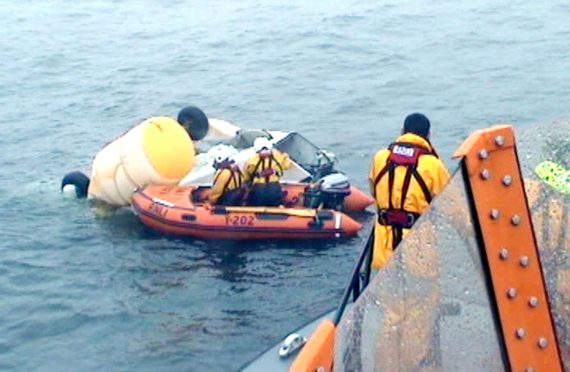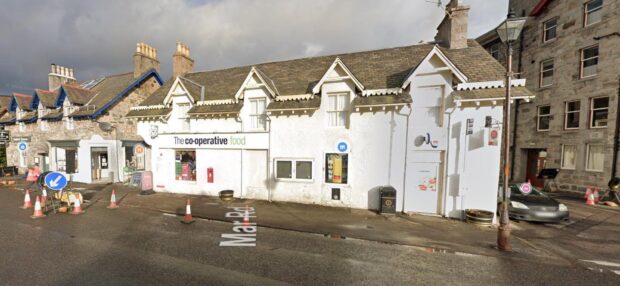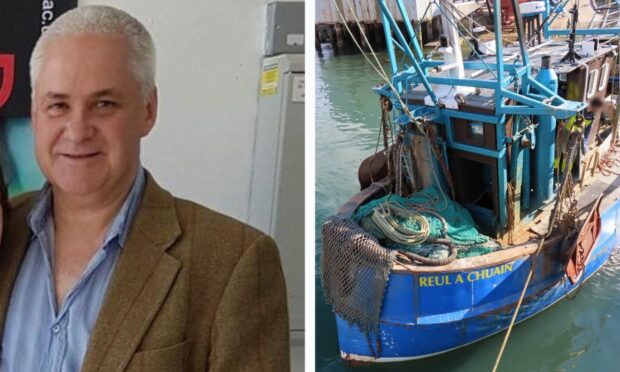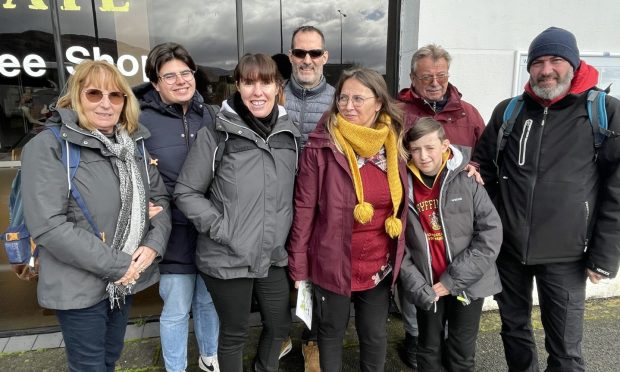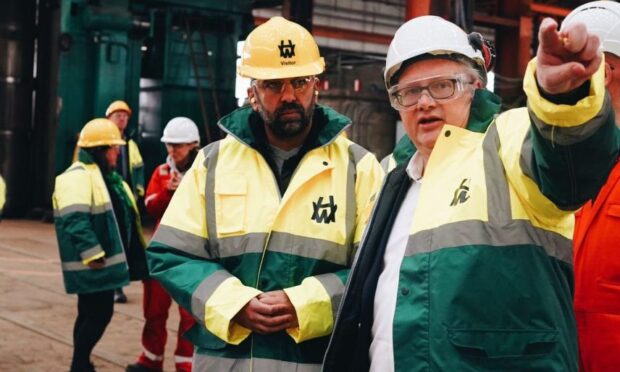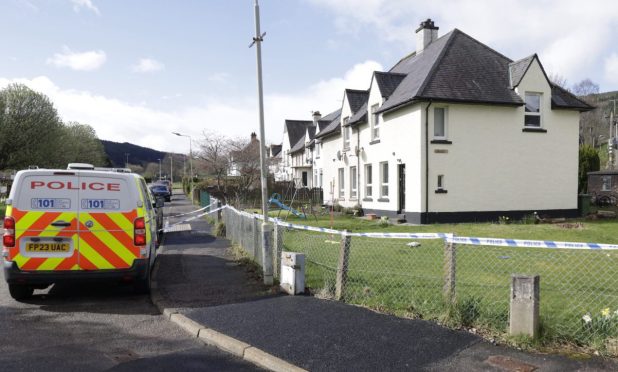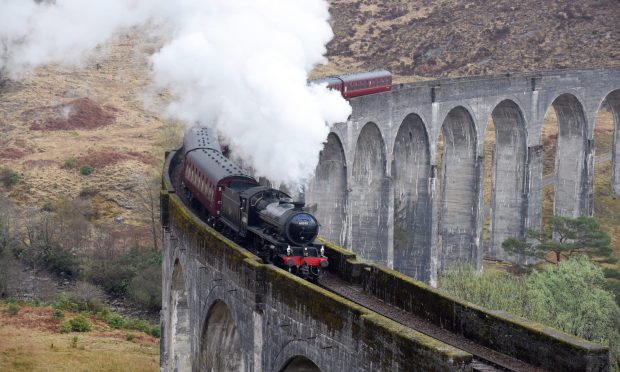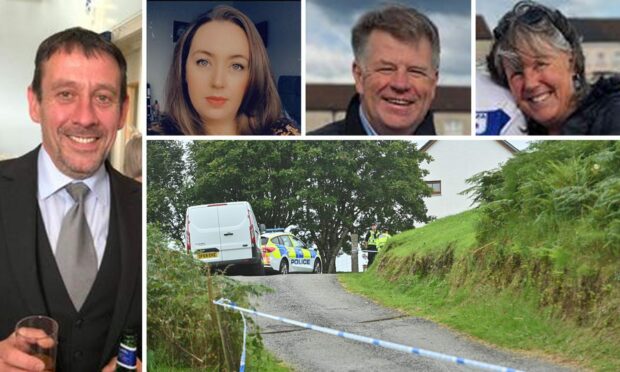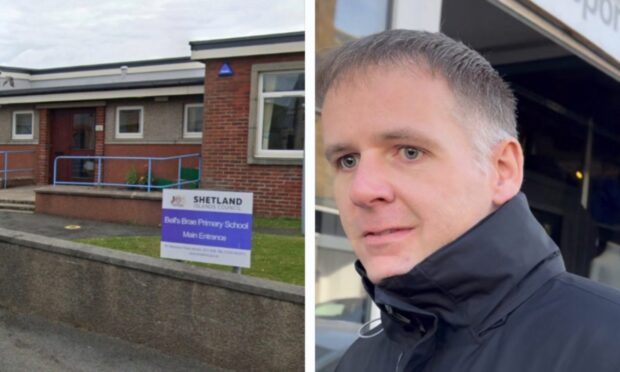The grief-stricken chief pilot of a helicopter that crashed off Shetland killing four oil workers has described how his “world ended” that horrific day.
Captain Martin Miglans, 58, broke down in a police interview just days after a CHC Super Puma he was commanding ditched in the Atlantic Ocean.
The accident took place seven years ago in low cloud, just under two miles from Sumburgh Airport.
An emotional police video of an interview with the pilot, taken just days after the 2013 tragedy, was played during the first day of a fatal accident inquiry into the tragedy.
An affidavit statement taken earlier this year from Capt Miglans was also read out as evidence, in which he said: “I break down when thinking about the accident.
“It is the worst nightmare you can imagine.”
Capt Miglans suffered serious spinal injuries in the crash, which claimed four lives, and he said he continues to suffer post-traumatic stress disorder and “will never fly again”.
In a 90-minute statement to police just days after the horror crash, Capt Miglans, whose address was given as Aberdeenshire, said: “I am in utter, utter devastation.
“What has happened? I am destroyed.”
Describing the moments immediately after the helicopter entered the water, the pilot said: “I thought I am going to die. I am going to drown. I need to say cheerio to people.
“Everything was wrong, it was all lost by then.
“That is my nightmare to this day. I remember the shock and horror of seeing the sea.”
“You do the training but it’s not a movie. When it’s real it’s shocking to the core.”
Words I can not describe. How can we be here. It is just not right. How can I describe it. It was good … and then water. I can’t remember from the last checks and the water.”
Captain Martin Miglans
He said he recalls nothing prior to ditching in the sea, saying the first he knew was “water filling the cockpit. I will never forget that”.
Capt Miglans said he struggled to pull the door handle to eventually escape and then added he was in “totally indescribable shock. It was hell on earth”.
“I am thinking of the passengers. Where is everybody? I thought I hope they are alive, oh God please, please.”
Capt Miglans, despite his injuries, managed to get on a liferaft but witnessed attempts to save the life of one of the passengers fail.
He said: “I hoped, I prayed, but he was the wrong colour. I could not do anything. I thought I don’t want to be saved. It was so traumatic.”
The pilot described how he was shouting at rescuers asking if everyone had been rescued but, when he realised the situation, said: “I am in agony.”
But he added: “I don’t want sympathy.”
He described how the journey had been “normal” until the final moment, saying he and co-pilot Alan Bell had enjoyed eating cake prior to the crash.
Capt Miglans said: “It was all looking good. The first thing I remember [about the crash] is touching the water, thinking this is not normal.”
Speaking to two police officers, he said: “I am in another world now. It makes no sense … shock … trauma.
“Words I can not describe. How can we be here. It is just not right. How can I describe it. It was good … and then water. I can’t remember from the last checks and the water.
“Water comes over our heads. This all happened in a very short space. We are turning over. Shock and now I am in disarray. How, why, I don’t know.
“I just shouted, stop stop stop. It was totally indescribable shock, hell on earth. I am thinking of the passengers. Where is everybody. I hoped they are all alive. Oh god please, please.”
In his affidavit taken recently, he added: “I have never recovered from the anguish from the incident. It has destroyed my head. My world ended with that crash.”
“It was an accident and I could not stop it. I don’t know what happened. I have done it for 16 years. I have no idea what happened. All I know is we have a terrible fatal accident.
“No one should feel this. You are on a different planet. It is just shocking to the core. In my mind it was all fine, then it is not. Why is the sea there? I don’t remember anything.”
The inquiry is being held into the tragic flight returning workers from the Borgsten Dolphin oil platform in the North Sea to Aberdeen, via Shetland, where it was refuel.
The passengers who died were Sarah Darnley, 45, of Elgin; Gary McCrossan, 59, of Inverness; Duncan Munro, 46, of Bishop Auckland; and 57-year-old George Allison, of Winchester.

The victims were offshore workers travelling onboard a Eurocopter AS332 Super Puma helicopter belonging to CHC Helicopters.
The hearing involves counsel for families of victims and survivors, the Civil Aviation Authority, helicopter operator CHC, and plane manufacturer AirBus, who all indicated they were ready to begin.
Highlands and Islands Sheriff Principal Derek Pyle, who is conducting the inquiry, opened the session yesterday.
He said: “This is an important hearing. It has further importance in that this is the first virtual fact-finding hearing of this size and scope ever done in Scotland, and possibly the UK and further afield.
“It is also important that during this inquiry we are all patient about technology.”
Video conferencing technology is being used during the hearing due to Covid-19 restrictions in place throughout courts across Scotland.
The grim details of how the four victims of the Shetland Super Puma tragedy died were read out at the very beginning of the inquiry.
Sarah Darnley, 45, from Elgin, Duncan Munro, 46, from Bishop Auckland, and George Allison, 57, from Winchester, all drowned.
But the fatal accident inquiry was told that Gary McCrossan, 59, from Inverness, had managed to get himself free from the helicopter, reach the sea surface and scramble onto a liferaft.
However, despite heroic attempts to save his life, Mr McCrossan subsequently died of a ‘cardiac enlargement’.
The court was told that offshore steward Sarah Darnley and safety consultant George Allison had been found in the water among fuselage debris.
I can’t remember the descent. I have seen what the AAIB have said, but I have no memory of it.”
Captain Martin Miglans
Post-mortem examinations revealed their causes of death as drowning, although Mr Allison had also suffered head trauma during the incident.
Production operative Duncan Munro was found in the submerged fuselage still harnessed to his seat. He had also drowned.
Welder Gary McCrossan managed to escape to a life raft. But he was seen to be suffering from chest pains and collapsed.
Efforts to resuscitate were made and he was winched onto a helicopter to be taken ashore but he sadly later died.
A post-mortem examination showed he had previously been suffering from cardiac disease and that the cause of death had been cardiac enlargement.
The inquiry was told that the emotional and physical stress caused by the crash would have acted as a trigger to the fatal cardiac event.
Evidence was first led by Phil Sleight, deputy chief inspector of the Air Accidents Investigation Branch (AAIB).
He said they found that flight instruments had not been “monitored effectively” by the pilots in the moments leading up to the crash.
Mr Sleight said: “The decreasing airspeed went unnoticed by the pilots until a very late stage, when the helicopter was in a critically low energy state.
“The commander’s attempt to recover the situation were unsuccessful and the helicopter struck the surface of the sea.
“It rapidly filled with water and rolled inverted, but was kept afloat by the flotation bags which had deployed.”
He said there was no evidence relating to any fault with the helicopter that could have caused or contributed to the crash.
A joint minute of agreement at the start of the inquiry, which set out the sequence of events and loss of life, said the helicopter had been descending into Sumburgh with speed reducing.
When an alert sounded at 300ft, Captain Martin Miglans attempted a recovery action but it was “highly likely unrecoverable”.
The helicopter ultimately hit the water.
Chief Pilot Miglans said he could not recall any event prior to hitting the water, saying: “The flight appeared to be a normal flight, until I saw the sea and we entered the water.
“I can’t remember the descent. I have seen what the AAIB have said, but I have no memory of it.
“I don’t remember the detail at the time. I can’t remember hearing the [emergency] call.
“I just remember the shock and horror of seeing the sea.”
The inquiry is expected to last four weeks.
